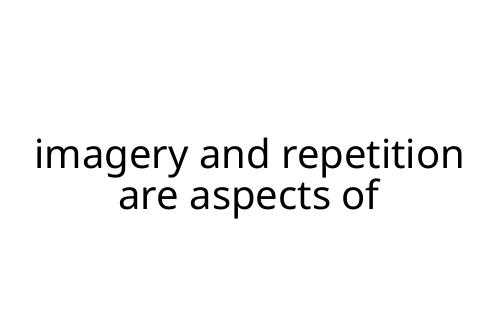imagery and repetition are aspects of
Imagery and repetition are aspects of effective communication, whether in writing, speech, advertising, or even daily conversation. If you’re trying to understand why these two elements matter, and how they show up in the things you read or hear, this guide will break it down with plain, direct explanation.
What Is Imagery?
Imagery is about creating a picture in someone’s mind. Writers use vivid descriptions that appeal to the senses—sight, sound, touch, taste, and smell. Instead of just telling the reader something (“The garden was nice”), imagery shows it (“Sunlight caught the dewdrops on leaves as a robin picked at cool, dark soil”).
Why does this matter? Good imagery makes content memorable. It’s easier to remember a strong picture than a flat statement. In poetry and literature, imagery can set the mood, deepen emotional impact, and help readers feel part of the scene.
Understanding Repetition
Repetition, simply put, is when words, phrases, or ideas are repeated intentionally. In speeches, you might hear the same phrase more than once to drive a point home. Writers use repetition for emphasis, to build rhythm, or to make sure an idea sticks.
For example, Martin Luther King Jr.’s “I have a dream” speech uses repetition masterfully. Every time he repeats the famous phrase, it gains strength.
How Imagery and Repetition Work Together
Imagery and repetition are aspects of writing that often team up. When a writer repeats a vivid image or sensory detail, it doesn’t just highlight the idea—it makes it come alive, over and over.
In advertising, for example, you might hear a slogan that repeats (“Melts in your mouth, not in your hands”), paired with visuals described so clearly they’re easy to picture. Political leaders, poets, marketers—all use this duo to make sure ideas are both felt and remembered.
Pros and Cons of Imagery and Repetition
Pros:
- Enhanced Memory: Both techniques help information “stick.” Repeat a strong image, and people are unlikely to forget.
- Emotional Impact: Detailed imagery and persistent repetition can stir real feelings, motivating action or understanding.
- Clarity: Repetition clarifies key points. Imagery clarifies what something looks or feels like.
Cons:
- Overuse: Too much repetition can sound tedious or annoying. Excessive imagery can distract or overwhelm.
- Simplicity Loss: Sometimes, repeating or painting a picture isn’t appropriate—simple facts work better.
Tips for Using Imagery and Repetition Effectively
- Be Selective: Use imagery for your most important points. Save repetition for what truly matters.
- Balance: Too much of either can dilute impact. Keep it simple and purposeful.
- Know Your Audience: Are they reading for entertainment, or looking for facts? Adjust your use accordingly.
Bottom Line
Imagery and repetition are aspects of communication that help ideas sink in and resonate. Use them wisely, and your message has a better chance of being understood—and remembered. Whether you’re writing, presenting, or just aiming for clear conversation, keep these tools in mind for stronger, more effective results.
